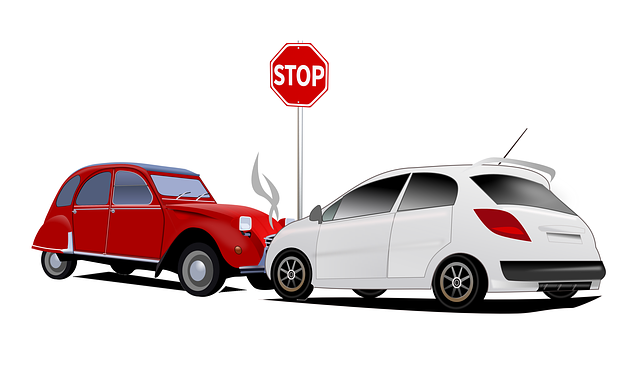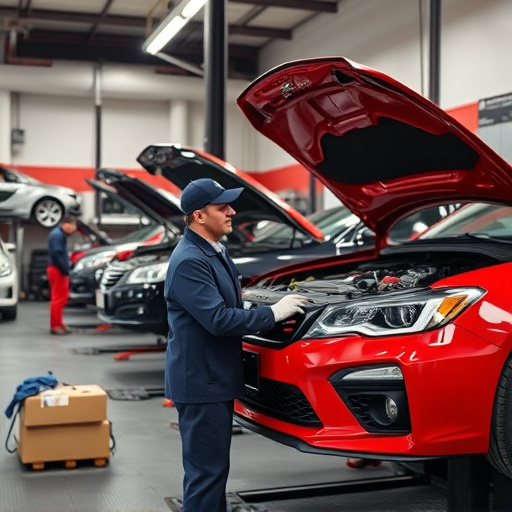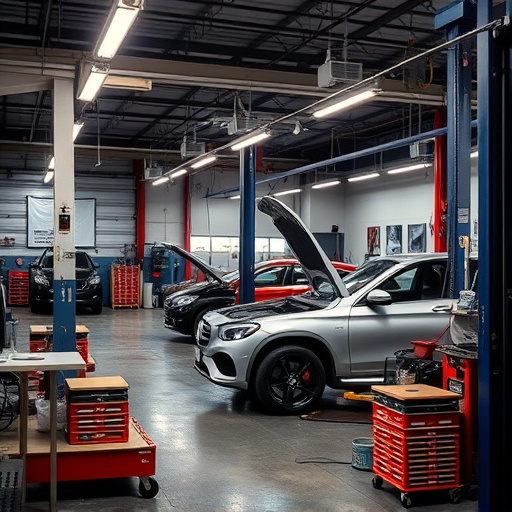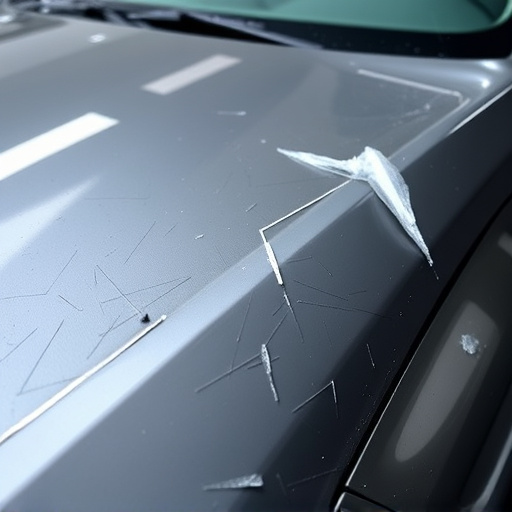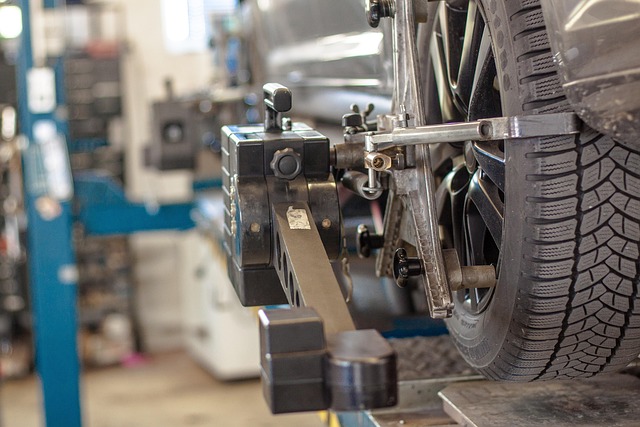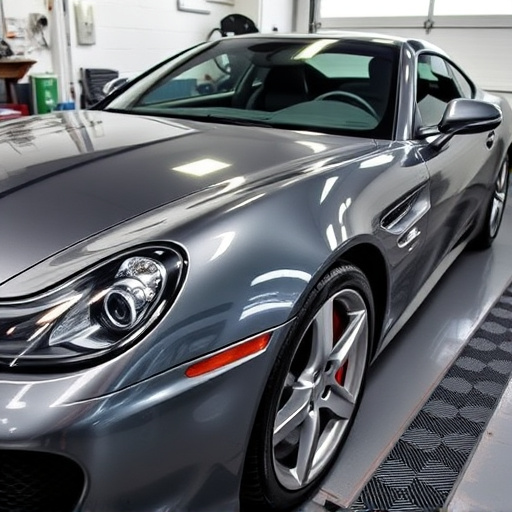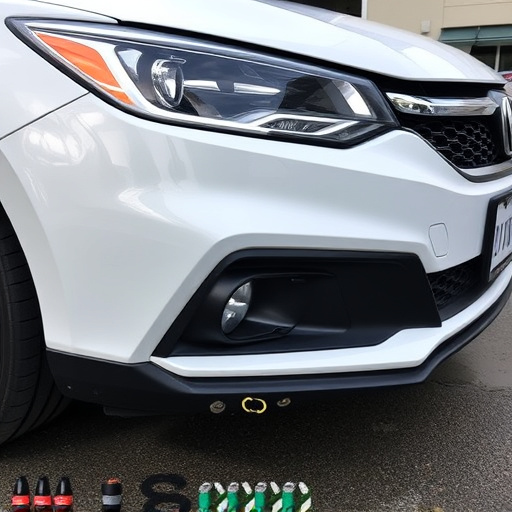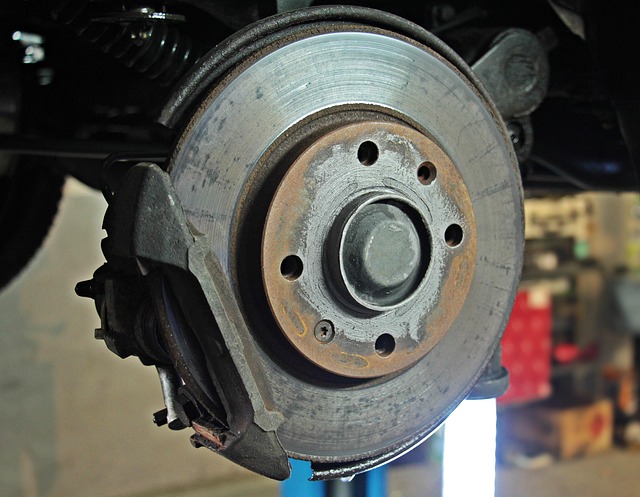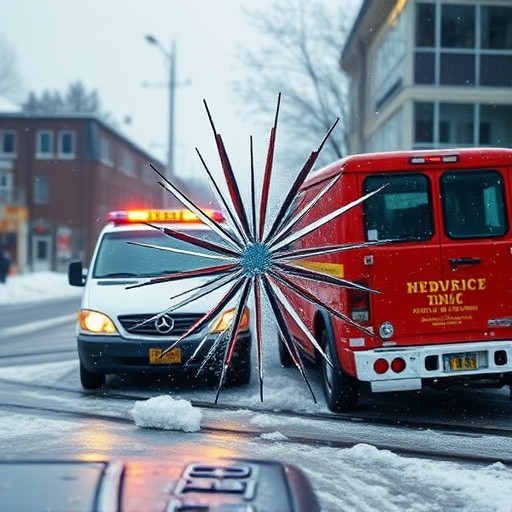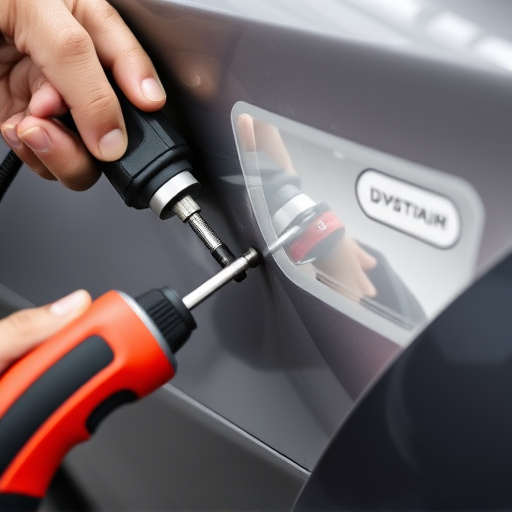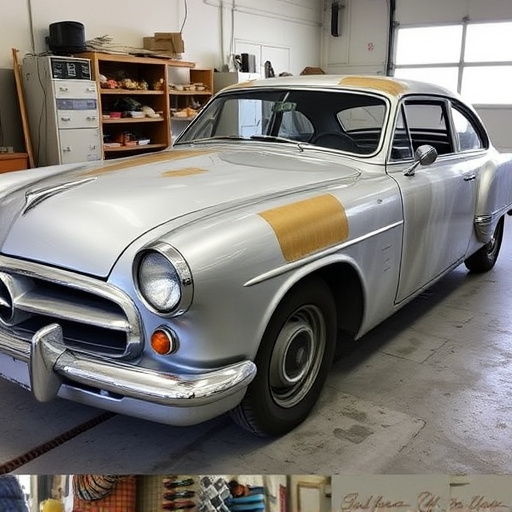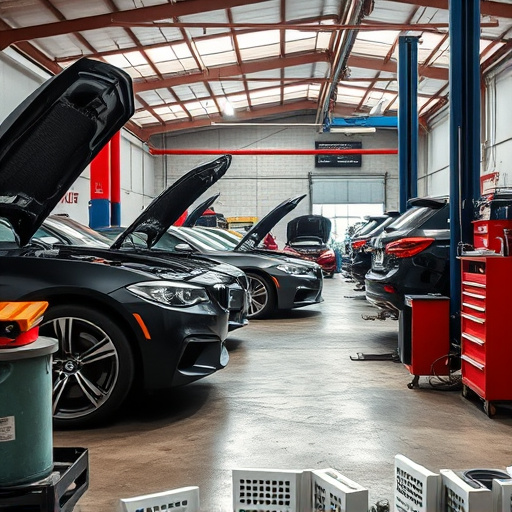Primer surfacer, a crucial auto bodywork tool, acts as a protective barrier and bonding agent, enhancing finishes and preventing moisture/corrosion damage. Selecting the right one based on panel type is key, with formulations addressing porosity, moisture resistance, and chemical durability for optimal performance during application. To ensure high-quality results, follow steps including surface cleaning, imperfection repair, even coating with a suitable tool, drying, and light sanding for a smooth finish ready for painting.
Looking to master the art of primer surfacer application across diverse panel types? This guide is your compass. We demystify the role and benefits of this crucial coating, serving as a protective shield and prep step for optimal finishes. Learn how choosing the right primer surfacer tailored to wood, metal, or composite panels can revolutionize your projects. Discover our step-by-step application guide for consistent, professional results every time.
- Understanding Primer Surfacer: Its Role and Benefits
- Choosing the Right Primer Surfacer for Various Panel Types
- Step-by-Step Application Guide for Optimal Results
Understanding Primer Surfacer: Its Role and Benefits
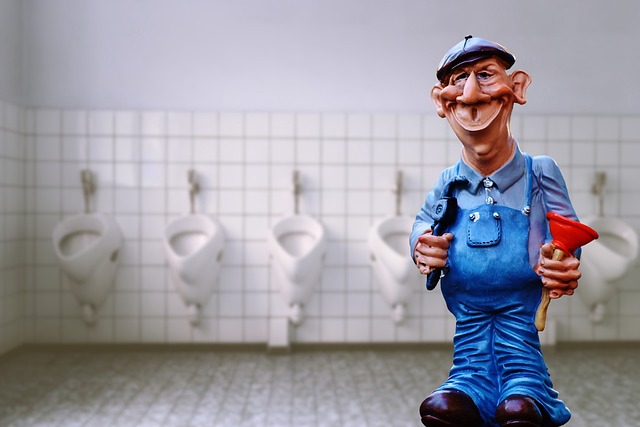
Primer surfacer is an essential component in the world of auto bodywork and car body repair. Its primary role is to create a smooth, even base for subsequent coatings, ensuring optimal adhesion between layers. This multi-functional product serves as both a bonding agent and a barrier, protecting the underlying surface from moisture, corrosion, and environmental contaminants.
Applying primer surfacer before painting or sealing is crucial for achieving durable finishes in a car body shop. Its benefits extend beyond mere preparation; it enhances the overall aesthetics of repairs, ensuring seamless integration with original factory finishes. For auto bodywork professionals, understanding the nuances of primer surfacer application is vital to delivering high-quality results that stand the test of time and withstand the hustle and bustle of daily driving.
Choosing the Right Primer Surfacer for Various Panel Types

Selecting the appropriate primer surfacer is a crucial step in any vehicle paint repair or auto collision center process. The choice depends on the type of panel being repaired, as different materials require specific treatments to ensure optimal adhesion and long-lasting results. For instance, metal panels often benefit from using a rust-inhibiting primer surfacer, which creates a protective barrier against corrosion, especially in a vehicle collision repair scenario. Meanwhile, plastic or composite panels may need a primer designed to enhance surface toughness and flexibility.
When preparing a panel for painting, whether in a vehicle paint repair or auto collision center setting, the right primer surfacer application makes all the difference. It acts as a bridge between the existing surface and the new coat of paint, offering a seamless finish. Primers formulated for various panel types consider factors like porosity, moisture levels, and chemical resistance, ensuring that the painted surface not only looks good but also endures wear and tear over time.
Step-by-Step Application Guide for Optimal Results
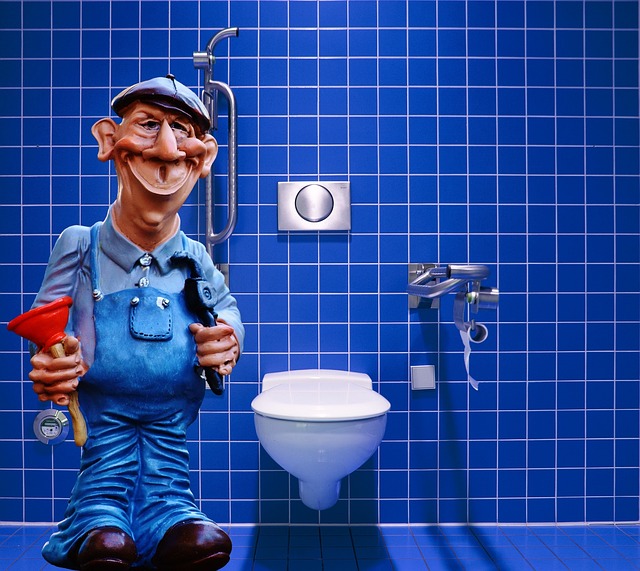
To achieve optimal results with a primer surfacer application, whether for automotive repair, car body repair, or vehicle repair projects, follow this step-by-step guide. Begin by thoroughly cleaning and preparing the panel surface to ensure adherence of the primer. This involves removing any grease, dust, or debris using a degreaser and a fine-grit sandpaper. Next, inspect the area for imperfections like pitting or rust spots, and address them with appropriate filler before sanding again to achieve a smooth texture.
Apply an even coat of primer surfacer using a high-quality spray gun or brush, ensuring full coverage without overloading the surface. Let the primer dry as per the manufacturer’s instructions, typically allowing for a few minutes between coats if necessary. Once the final coat has dried, sand lightly with fine-grit paper to ensure an even finish, readying the surface for subsequent coating steps in car body repair or vehicle repair processes.
A well-selected and properly applied primer surfacer is a game-changer in enhancing the durability and aesthetics of various panel types. By understanding its role, choosing the right product for specific surfaces, and following a meticulous application process, you can achieve optimal results. This comprehensive guide ensures that your project, whether it’s metal, wood, or composite panels, benefits from a strong bond and a seamless finish, making primer surfacer application an indispensable step in any professional or DIY endeavor.
